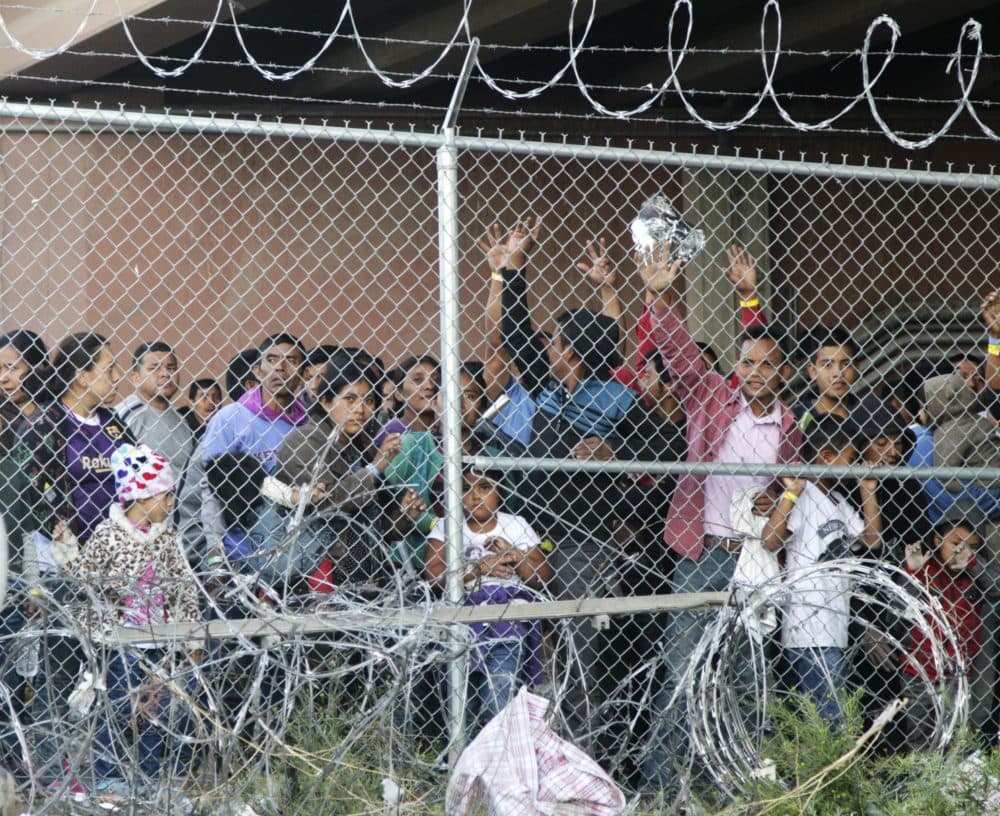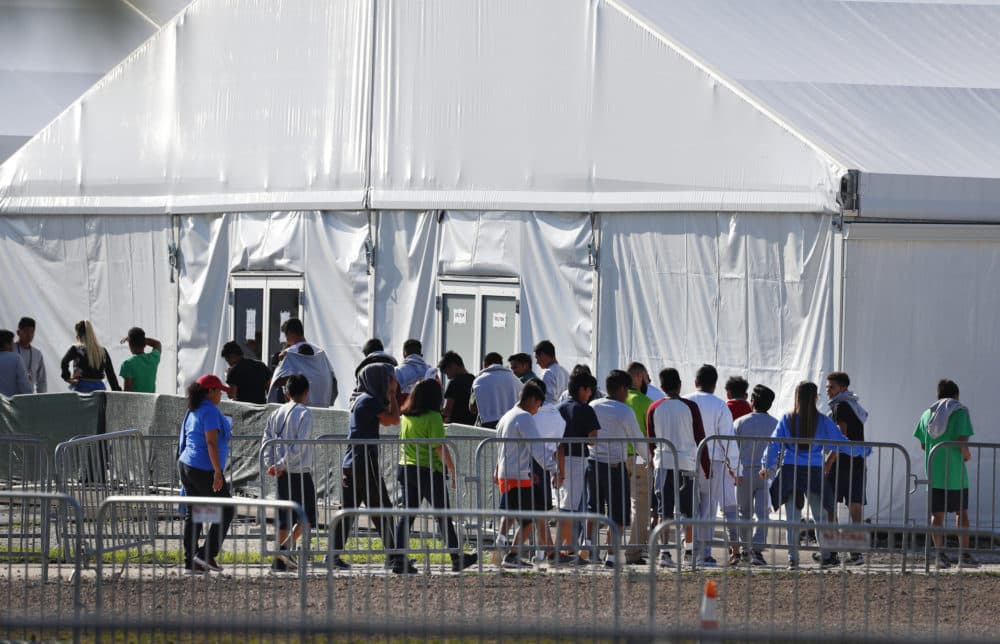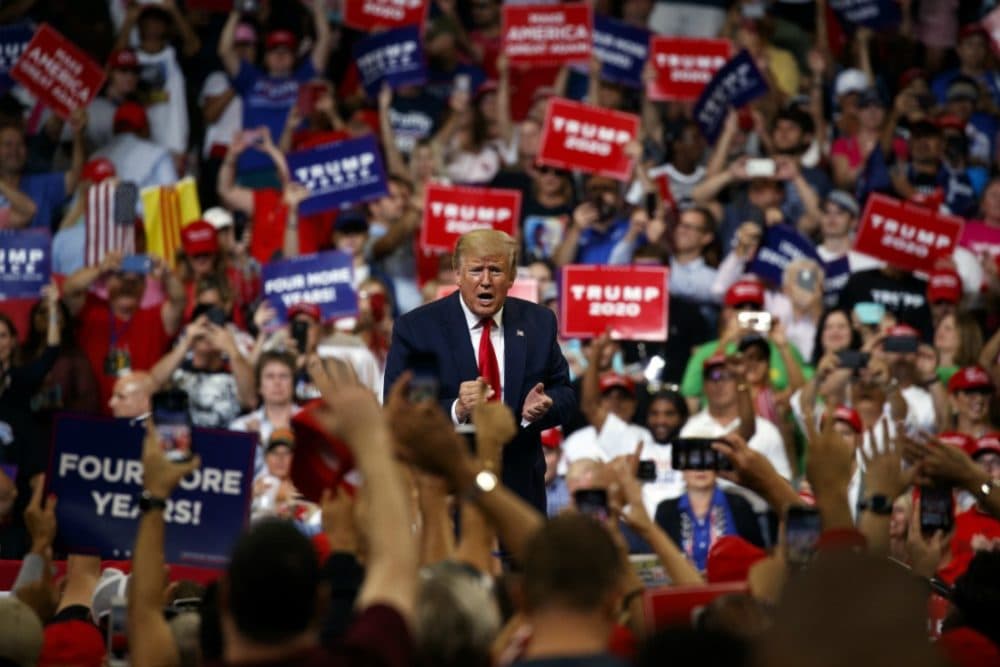Advertisement
Commentary
Detention Or Concentration Camps? The Language Debate Is A Sideshow

Along the southern border, tens of thousands of undocumented immigrants who’ve been detained by Immigration and Customs Enforcement (ICE) and Customs and Border Patrol (CBP) are now languishing in concentration camps that the Trump administration created.
These tent cities were built to execute Trump’s policy of locking up asylum-seekers and tracking down undocumented immigrants who’ve already integrated into American life. (The latter didn’t begin under Trump’s watch, but it has gotten far worse.) By many accounts, what happens inside Trump’s camps is mass torture.
People have been held in solitary confinement, deprived of sleep and sexually abused. Children have been forcibly drugged. The utility of the camps and the horrific conditions within beg for a stronger name than “detention facilities.”
This week, a handful of scholars and lawmakers called Trump’s migrant detention centers “concentration camps.” Andrea Pitzer, the author of "One Long Night: A Global History of Concentration Camps," recently told Esquire, “Things can be concentrations camps without being Dachau or Auschwitz.” New York’s Rep. Alexandria Ocasio-Cortez — who visited an earlier incarnation of the camps during her 2018 run for Congress — strongly agreed: “They are concentration camps.” Even Mike Godwin — a man who famously theorized that once an online discussion takes off, it will lead to Hitler comparisons — agrees with the new consensus. Why? Because Trump’s camps are clearly designed “to punish those individuals and their families who are detained.”

What ensued, predictably, is a semantics debate about whether or not it’s OK to call Trump’s detention centers “concentration camps.” In America, concentration camps are most commonly associated with the unique horrors of the Nazi Holocaust.
The notion that America has created similar camps today is controversial. Rep. Liz Cheney, an immigration hardliner and an expert in politically-convenient Holocaust memorializing, argues that the new term is an insult to the memory of those who were murdered by Hitler and his followers. Some of her colleagues agree.
But the Third Reich didn’t have a monopoly on the idea of incarcerating people in close proximity, without trial. Concentration camps have been set up in the Soviet Union, South Africa, China and many other countries. America established concentration camps on U.S. soil during World War II and packed them with Japanese-American citizens (but we refer those hellholes as “internment camps”). Today, the Trump administration is resurrecting that septic chapter of our history. However one may feel about the application of “concentration camps” to the situation on the southern border, a terrible reality remains: We are torturing human beings inside them. People have died in these camps. And worse yet, we don’t seem to understand why these camps exist, and how easily they could lead to far darker things.

Trump’s concentration camps are symptomatic of a global displacement crisis that’s fueled by economic desperation, the violence of draconian regimes and climate change -- issues we have contributed to with our foreign policy and our refusal to take global warming seriously. A recent Washington Post report revealed that border detention centers have become so crowded that ICE has resorted to flying planeloads of detained immigrants to facilities where they can be “processed.” Meanwhile, the World Bank and the United Nations are predicting that further environmental deterioration could result in well over 140 million “climate migrants” fleeing their homes and seeking safe havens across international borders by the year 2050.
When faced with an imminent challenge like this one, you could create an immigration framework that accounts for the root causes of migration and upholds human rights and dignity. This might mean expanding refugee resettlement programs, decriminalizing immigration offenses, such as being present in the U.S. without credentials, and ending mass detention. That’s the empathetic approach to immigration.
Or you could scrap empathy altogether. You could build walls, pack migrants into camps and punish them until they die, freeing up space for the next shipment of detainees.
Trump’s concentration camps are an indication that for now, America prefers the second option. And we’re not alone. Recent European elections have seen the rise of nationalist party leaders who ran on anti-immigration rhetoric similar to the poison that Trump spewed back in 2016. Even in Denmark, which is often considered a bastion of liberal values, the center-left social democrats have embraced hardline immigration policies while still maintaining the other pillars of their leftist brand.
Thus far, Europe’s approach to cracking down on mass migration hasn’t been quite as brutal as Trump’s. But we’re seeing alarming examples of cross-pollination between western governments that have embraced the idea of creating ethno-states by expelling immigrants — or putting them in camps.
Katie Gorka, the wife of former Trump adviser and prolific Hungarian white supremacist Sebastian Gorka, was just appointed as the latest spokeswoman for CBP. Meanwhile, volunteer sea-rescue operations in the Mediterranean are being shut down by the EU, and migrants who are detained by Libya’s coast guard are sent to concentration camps on Libyan soil where they have been tortured and raped. It doesn’t require much imagination to understand where this could lead.
The sliver of good news here is that we still have time to reclaim our government from Trump and those who believe that ethno-nationalism is an appropriate response to the global displacement crisis. But voting is the bare minimum. Every legal means of resistance in our arsenal — marches, sit-ins, general strikes and other forms of civil disobedience — must be utilized if we want to stop Trump’s concentration camps from becoming our new normal.
We must elevate activists like Scott Warren, who was nearly thrown in prison for the “crime” of giving water to migrants on the southern border, and Cristina Jiménez, an advocate for Dreamers and the co-founder of United We Dream (the first and largest immigrant youth-led immigration reform organization in America). We also must amplify insurgent politicians like AOC who are honest about the horrors being committed on the border today, and who are brave enough to offer humane alternatives. And these steps need to be taken as quickly as we can organize — as though our worst fears are finally being realized.
Because they are.
